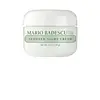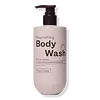What's inside
What's inside
 Key Ingredients
Key Ingredients

 Benefits
Benefits

 Concerns
Concerns

 Ingredients Side-by-side
Ingredients Side-by-side

Water
Skin ConditioningGlycerin
HumectantIsopropyl Myristate
EmollientStearic Acid
CleansingPropylene Glycol
HumectantCetyl Alcohol
EmollientFucus Vesiculosus Extract
EmollientHydrolyzed Elastin
EmollientCollagen
MoisturisingSodium Hyaluronate
HumectantGlyceryl Acrylate/Acrylic Acid Copolymer
HumectantCarbomer
Emulsion StabilisingParfum
MaskingSodium Chloride
MaskingPhenoxyethanol
PreservativePotassium Sorbate
PreservativeMethylparaben
PreservativePropylparaben
PreservativeSodium Benzoate
MaskingTriethanolamine
BufferingDiazolidinyl Urea
PreservativeMica
Cosmetic ColorantCI 77891
Cosmetic ColorantCI 19140
Cosmetic ColorantCI 42090
Cosmetic ColorantCI 77288
Cosmetic ColorantWater, Glycerin, Isopropyl Myristate, Stearic Acid, Propylene Glycol, Cetyl Alcohol, Fucus Vesiculosus Extract, Hydrolyzed Elastin, Collagen, Sodium Hyaluronate, Glyceryl Acrylate/Acrylic Acid Copolymer, Carbomer, Parfum, Sodium Chloride, Phenoxyethanol, Potassium Sorbate, Methylparaben, Propylparaben, Sodium Benzoate, Triethanolamine, Diazolidinyl Urea, Mica, CI 77891, CI 19140, CI 42090, CI 77288
Water
Skin ConditioningCocamidopropyl Betaine
CleansingSodium Lauroyl Sarcosinate
CleansingGlycol Distearate
EmollientLaureth-4
EmulsifyingDecyl Glucoside
CleansingCocamine Oxide
CleansingAcrylates/C10-30 Alkyl Acrylate Crosspolymer
Emulsion StabilisingParfum
MaskingPotassium Sorbate
PreservativeAvena Sativa Straw Extract
Skin ConditioningPanthenol
Skin ConditioningTocopheryl Acetate
AntioxidantSqualane
EmollientPersea Gratissima Oil
Skin ConditioningPhenoxyethanol
PreservativeTriethanolamine
BufferingWater, Cocamidopropyl Betaine, Sodium Lauroyl Sarcosinate, Glycol Distearate, Laureth-4, Decyl Glucoside, Cocamine Oxide, Acrylates/C10-30 Alkyl Acrylate Crosspolymer, Parfum, Potassium Sorbate, Avena Sativa Straw Extract, Panthenol, Tocopheryl Acetate, Squalane, Persea Gratissima Oil, Phenoxyethanol, Triethanolamine
 Reviews
Reviews

Ingredients Explained
These ingredients are found in both products.
Ingredients higher up in an ingredient list are typically present in a larger amount.
Parfum is a catch-all term for an ingredient or more that is used to give a scent to products.
Also called "fragrance", this ingredient can be a blend of hundreds of chemicals or plant oils. This means every product with "fragrance" or "parfum" in the ingredients list is a different mixture.
For instance, Habanolide is a proprietary trade name for a specific aroma chemical. When used as a fragrance ingredient in cosmetics, most aroma chemicals fall under the broad labeling category of “FRAGRANCE” or “PARFUM” according to EU and US regulations.
The term 'parfum' or 'fragrance' is not regulated in many countries. In many cases, it is up to the brand to define this term.
For instance, many brands choose to label themselves as "fragrance-free" because they are not using synthetic fragrances. However, their products may still contain ingredients such as essential oils that are considered a fragrance by INCI standards.
One example is Calendula flower extract. Calendula is an essential oil that still imparts a scent or 'fragrance'.
Depending on the blend, the ingredients in the mixture can cause allergies and sensitivities on the skin. Some ingredients that are known EU allergens include linalool and citronellol.
Parfum can also be used to mask or cover an unpleasant scent.
The bottom line is: not all fragrances/parfum/ingredients are created equally. If you are worried about fragrances, we recommend taking a closer look at an ingredient. And of course, we always recommend speaking with a professional.
Learn more about ParfumPhenoxyethanol is a preservative that has germicide, antimicrobial, and aromatic properties. Studies show that phenoxyethanol can prevent microbial growth. By itself, it has a scent that is similar to that of a rose.
It's often used in formulations along with Caprylyl Glycol to preserve the shelf life of products.
Potassium Sorbate is a preservative used to prevent yeast and mold in products. It is commonly found in both cosmetic and food products.
This ingredient comes from potassium salt derived from sorbic acid. Sorbic acid is a natural antibiotic and effective against fungus.
Both potassium sorbate and sorbic acid can be found in baked goods, cheeses, dried meats, dried fruit, ice cream, pickles, wine, yogurt, and more.
You'll often find this ingredient used with other preservatives.
Learn more about Potassium SorbateTriethanolamine is an emulsifier and pH adjuster. It is created using ethylene oxide and ammonia. This gives Triethanolamine a nitrogen core and a similar scent to ammonia.
As an emulsifier, it prevents ingredients from separating and enhances texture by adding volume to a product.
PH adjusters are common in cosmetic products. The pH of a product can affect the effectiveness of other ingredients. A product with a high pH may also irritate the skin.
Learn more about TriethanolamineWater. It's the most common cosmetic ingredient of all. You'll usually see it at the top of ingredient lists, meaning that it makes up the largest part of the product.
So why is it so popular? Water most often acts as a solvent - this means that it helps dissolve other ingredients into the formulation.
You'll also recognize water as that liquid we all need to stay alive. If you see this, drink a glass of water. Stay hydrated!
Learn more about Water